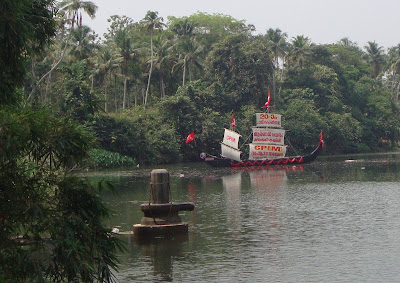The general strike announced by all the trade unions in India against the pro-rich policies of the Indian government went like just another Harthal in Attingal, perhaps in most other parts of Kerala as well. This was the first time that the ruling-class trade unions (mainly INTUC of Congress(I) and BMS of BJP) joined hands with the left-leaning trade unions like CITU and AITUC. But people of the town converted it into just another holiday.
Shops remained closed and public service vehicles remained in the garage. The town had a 1960s or 1970s look and feel to it, with occasional vehicles plying and some pedestrians passing by. Only a handful of people, around a hundred, gathered even for the protest march held in connection with the strike.
The march started from Attingal Kacheri Nada, in front of Mandoor Building, which once housed the now defunct SR Theater. Prominent local leaders of CITU, INTUC, BMS, and of any other trade union worth its salt were present. CPI(M) cadre and the Congress workers (who are now active again in Attingal after five long years of hibernation) were marked by their absence. Some banks and private financial institutions started the daily operations. But they were forced to close down soon. It all took only a couple of phone calls to force them though.
The march proceeded to KSRTC bus station in Attingal, which also had an empty look. The only person visible was Mr. Sundar Wilfred (a familiar figure for most people in Attingal – shown in the photo below).
The strike had been billed by some people as India's answer to Tahrir Square. Judging by the mood in Attingal, it did not even reach the level of Anna Hazare's agitation.
Photo of the Day
Where else can you find Karl Marx and the Lord Parama Sivan, an unlikely pair of comrades, together? This snap was taken from Poovanpara near the bridge.




Comments